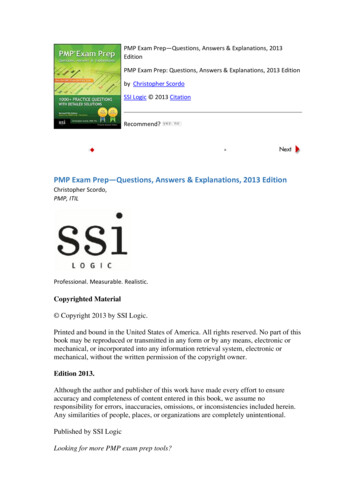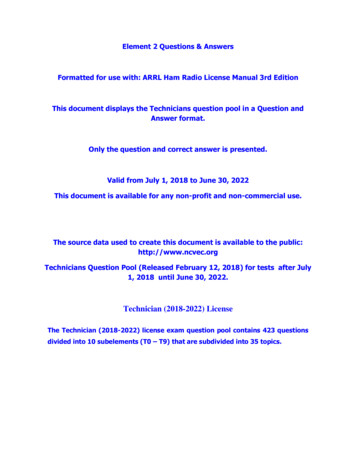
Transcription
Element 2 Questions & AnswersFormatted for use with: ARRL Ham Radio License Manual 3rd EditionThis document displays the Technicians question pool in a Question andAnswer format.Only the question and correct answer is presented.Valid from July 1, 2018 to June 30, 2022This document is available for any non-profit and non-commercial use.The source data used to create this document is available to the public:http://www.ncvec.orgTechnicians Question Pool (Released February 12, 2018) for tests after July1, 2018 until June 30, 2022.Technician (2018-2022) LicenseThe Technician (2018-2022) license exam question pool contains 423 questionsdivided into 10 subelements (T0 – T9) that are subdivided into 35 topics.
SUBELEMENT T1 – FCC Rules, descriptions, and definitions for the Amateur Radio Service, operatorand station license responsibilities – [6 Exam Questions – 6 Topics]T1A01 Which of the following is a purpose of the Amateur Radio Service as stated in the FCC rules andregulations?Advancing skills in the technical and communication phases of the radio artT1A02 Which agency regulates and enforces the rules for the Amateur Radio Service in the United States?The FCCT1A03 What are the FCC rules regarding the use of a phonetic alphabet for station identification in the AmateurRadio Service?It is encouragedT1A04 How many operator/primary station license grants may be held by any one person?OneT1A05 What is proof of possession of an FCC-issued operator/primary license grant?The control operator's operator/primary station license must appear in the FCC ULS consolidated licensee databaseT1A06 What is the FCC Part 97 definition of a "beacon"?An amateur station transmitting communications for the purposes of observing propagation or related experimentalactivitiesT1A07 What is the FCC Part 97 definition of a "space station"?An amateur station located more than 50 km above the Earth's surfaceT1A08 Which of the following entities recommends transmit/receive channels and other parameters for auxiliaryand repeater stations?Volunteer Frequency Coordinator recognized by local amateurs
T1A09 Who selects a Frequency Coordinator?Amateur operators in a local or regional area whose stations are eligible to be repeater or auxiliary stationsT1A10 Which of the following describes the Radio Amateur Civil Emergency Service (RACES)?A. A radio service using amateur frequencies for emergency management or civil defense communicationsB. A radio service using amateur stations for emergency management or civil defense communicationsC. An emergency service using amateur operators certified by a civil defense organization as being enrolled in that organizationD. All of these choices are correctT1A11 When is willful interference to other amateur radio stations permitted?At no timeT1B01 What is the International Telecommunications Union (ITU)?A United Nations agency for information and communication technology issuesT1B02 Which amateur radio stations may make contact with an amateur radio station on the International SpaceStation (ISS) using 2 meter and 70 cm band frequencies?Any amateur holding a Technician or higher-class licenseT1B03 Which frequency is within the 6 meter amateur band?52.525 MHzT1B04 Which amateur band are you using when your station is transmitting on 146.52 MHz?2 meter bandT1B05 What is the limitation for emissions on the frequencies between 219 and 220 MHz?Fixed digital message forwarding systems onlyT1B06 On which HF bands does a Technician class operator have phone privileges?10 meter band only
T1B07 Which of the following VHF/UHF frequency ranges are limited to CW only?50.0 MHz to 50.1 MHz and 144.0 MHz to 144.1 MHzT1B08 Which of the following is a result of the fact that the Amateur Radio Service is secondary in all or portionsof some amateur bands (such as portions of the 70 cm band)?U.S. amateurs may find non-amateur stations in those portions, and must avoid interfering with themT1B09 Why should you not set your transmit frequency to be exactly at the edge of an amateur band or sub-band?A. To allow for calibration error in the transmitter frequency displayB. So that modulation sidebands do not extend beyond the band edgeC. To allow for transmitter frequency driftD. All of these choices are correctT1B10 Which of the following HF bands have frequencies available to the Technician class operator for RTTY anddata transmissions?10 meter band onlyT1B11 What is the maximum peak envelope power output for Technician class operators using their assignedportions of the HF bands?200 wattsT1B12 Except for some specific restrictions, what is the maximum peak envelope power output for Technicianclass operators using frequencies above 30 MHz?1500 wattsT1C01 For which license classes are new licenses currently available from the FCC?Technician, General, Amateur ExtraT1C02 Who may select a desired call sign under the vanity call sign rules?Any licensed amateur
T1C03 What types of international communications is an FCC-licensed amateur radio station permitted to make?Communications incidental to the purposes of the Amateur Radio Service and remarks of a personal characterT1C04 When are you allowed to operate your amateur station in a foreign country?When the foreign country authorizes itT1C05 Which of the following is a valid call sign for a Technician class amateur radio station?K1XXXT1C06 From which of the following locations may an FCC-licensed amateur station transmit?From any vessel or craft located in international waters and documented or registered in the United StatesT1C07 What may result when correspondence from the FCC is returned as undeliverable because the granteefailed to provide and maintain a correct mailing address with the FCC?Revocation of the station license or suspension of the operator licenseT1C08 What is the normal term for an FCC-issued primary station/operator amateur radio license grant?Ten yearsT1C09 What is the grace period following the expiration of an amateur license within which the license may berenewed?Two yearsT1C10 How soon after passing the examination for your first amateur radio license may you operate a transmitteron an Amateur Radio Service frequency?As soon as your operator/station license grant appears in the FCC s license databaseT1C11 If your license has expired and is still within the allowable grace period, may you continue to operate atransmitter on Amateur Radio Service frequencies?No, transmitting is not allowed until the FCC license database shows that the license has been renewed
T1D01 With which countries are FCC-licensed amateur radio stations prohibited from exchangingcommunications?Any country whose administration has notified the International Telecommunications Union (ITU) that it objects tosuch communicationsT1D02 Under which of the following circumstances may an amateur radio station make one-way transmissions?When transmitting code practice, information bulletins, or transmissions necessary to provide emergencycommunicationsT1D03 When is it permissible to transmit messages encoded to hide their meaning?Only when transmitting control commands to space stations or radio control craftT1D04 Under what conditions is an amateur station authorized to transmit music using a phone emission?When incidental to an authorized retransmission of manned spacecraft communicationsT1D05 When may amateur radio operators use their stations to notify other amateurs of the availability ofequipment for sale or trade?When the equipment is normally used in an amateur station and such activity is not conducted on a regular basisT1D06 What, if any, are the restrictions concerning transmission of language that may be considered indecent orobscene?Any such language is prohibitedT1D07 What types of amateur stations can automatically retransmit the signals of other amateur stations?Repeater, auxiliary, or space stationsT1D08 In which of the following circumstances may the control operator of an amateur station receivecompensation for operating that station?When the communication is incidental to classroom instruction at an educational institution
T1D09 Under which of the following circumstances are amateur stations authorized to transmit signals related tobroadcasting, program production, or news gathering, assuming no other means is available?Only where such communications directly relate to the immediate safety of human life or protection of propertyT1D10 What is the meaning of the term "broadcasting" in the FCC rules for the Amateur Radio Service?Transmissions intended for reception by the general publicT1D11 When may an amateur station transmit without on-the-air identification?When transmitting signals to control model craftT1E01 When is an amateur station permitted to transmit without a control operator?NeverT1E02 Who may be the control operator of a station communicating through an amateur satellite or spacestation?Any amateur whose license privileges allow them to transmit on the satellite uplink frequencyT1E03 Who must designate the station control operator?The station licenseeT1E04 What determines the transmitting privileges of an amateur station?The class of operator license held by the control operatorT1E05 What is an amateur station control point?The location at which the control operator function is performedT1E06 When, under normal circumstances, may a Technician class licensee be the control operator of a stationoperating in an exclusive Amateur Extra class operator segment of the amateur bands?At no time
T1E07 When the control operator is not the station licensee, who is responsible for the proper operation of thestation?The control operator and the station licensee are equally responsibleT1E08 Which of the following is an example of automatic control?Repeater operationT1E09 Which of the following is true of remote control operation?A. The control operator must be at the control pointB. A control operator is required at all timesC. The control operator indirectly manipulates the controlsD. All of these choices are correctT1E10 Which of the following is an example of remote control as defined in Part 97?Operating the station over the internetT1E11 Who does the FCC presume to be the control operator of an amateur station, unless documentation to thecontrary is in the station records?The station licenseeT1F01 When must the station licensee make the station and its records available for FCC inspection?At any time upon request by an FCC representativeT1F02 When using tactical identifiers such as "Race Headquarters" during a community service net operation,how often must your station transmit the station's FCC-assigned call sign?At the end of each communication and every ten minutes during a communicationT1F03 When is an amateur station required to transmit its assigned call sign?At least every 10 minutes during and at the end of a communication
T1F04 Which of the following is an acceptable language to use for station identification when operating in aphone sub-band?The English languageT1F05 What method of call sign identification is required for a station transmitting phone signals?Send the call sign using a CW or phone emissionT1F06 Which of the following formats of a self-assigned indicator is acceptable when identifying using a phonetransmission?A. KL7CC stroke W3B. KL7CC slant W3C. KL7CC slash W3D. All of these choices are correctT1F07 Which of the following restrictions apply when a non-licensed person is allowed to speak to a foreignstation using a station under the control of a Technician class control operator?The foreign station must be one with which the U.S. has a third-party agreementT1F08 What is meant by the term "Third Party Communications"?A message from a control operator to another amateur station control operator on behalf of another personT1F09 What type of amateur station simultaneously retransmits the signal of another amateur station on adifferent channel or channels?Repeater stationT1F10 Who is accountable should a repeater inadvertently retransmit communications that violate the FCC rules?The control operator of the originating stationT1F11 Which of the following is a requirement for the issuance of a club station license grant?The club must have at least four members
SUBELEMENT T2 – Operating Procedures – [3 Exam Questions – 3 Topics]T2A01 Which of the following is a common repeater frequency offset in the 2 meter band?Plus or minus 600 kHzT2A02 What is the national calling frequency for FM simplex operations in the 2 meter band?146.520 MHzT2A03 What is a common repeater frequency offset in the 70 cm band?Plus or minus 5 MHzT2A04 What is an appropriate way to call another station on a repeater if you know the other station's call sign?Say the station's call sign, then identify with your call signT2A05 How should you respond to a station calling CQ?Transmit the other station s call sign followed by your call signT2A06 Which of the following is required when making on-the-air test transmissions?Identify the transmitting stationT2A07 What is meant by "repeater offset?"The difference between a repeater's transmit frequency and its receive frequencyT2A08 What is the meaning of the procedural signal "CQ"?Calling any stationT2A09 What brief statement indicates that you are listening on a repeater and looking for a contact?Your call sign
T2A10 What is a band plan, beyond the privileges established by the FCC?A voluntary guideline for using different modes or activities within an amateur bandT2A11 What term describes an amateur station that is transmitting and receiving on the same frequency?SimplexT2A12 Which of the following is a guideline when choosing an operating frequency for calling CQ?A. Listen first to be sure that no one else is using the frequencyB. Ask if the frequency is in useC. Make sure you are in your assigned bandD. All of these choices are correctT2B01 What is the most common use of the "reverse split" function of a VHF/UHF transceiver?Listen on a repeater s input frequencyT2B02 What term describes the use of a sub-audible tone transmitted along with normal voice audio to open thesquelch of a receiver?CTCSST2B03 If a station is not strong enough to keep a repeater's receiver squelch open, which of the following mightallow you to receive the station's signal?Listen on the repeater input frequencyT2B04 Which of the following could be the reason you are unable to access a repeater whose output you canhear?A. Improper transceiver offsetB. The repeater may require a proper CTCSS tone from your transceiverC. The repeater may require a proper DCS tone from your transceiverD. All of these choices are correctT2B05 What might be the problem if a repeater user says your transmissions are breaking up on voice peaks?You are talking too loudly
T2B06 What type of tones are used to control repeaters linked by the Internet Relay Linking Project (IRLP)protocol?DTMFT2B07 How can you join a digital repeater's "talk group"?Program your radio with the group s ID or codeT2B08 Which of the following applies when two stations transmitting on the same frequency interfere with eachother?Common courtesy should prevail, but no one has absolute right to an amateur frequencyT2B09 What is a "talk group" on a DMR digital repeater?A way for groups of users to share a channel at different times without being heard by other users on the channelT2B10 Which Q signal indicates that you are receiving interference from other stations?QRMT2B11 Which Q signal indicates that you are changing frequency?QSYT2B12 Why are simplex channels designated in the VHF/UHF band plans?So that stations within mutual communications range can communicate without tying up a repeaterT2B13 Where may SSB phone be used in amateur bands above 50 MHz?In at least some portion of all these bandsT2B14 Which of the following describes a linked repeater network?A network of repeaters where signals received by one repeater are repeated by all the repeaters
T2C01 When do the FCC rules NOT apply to the operation of an amateur station?Never, FCC rules always applyT2C02 What is meant by the term "NCS" used in net operation?Net Control StationT2C03 What should be done when using voice modes to ensure that voice messages containing unusual words arereceived correctly?Spell the words using a standard phonetic alphabetT2C04 What do RACES and ARES have in common?Both organizations may provide communications during emergenciesT2C05 What does the term "traffic" refer to in net operation?Formal messages exchanged by net stationsT2C06 Which of the following is an accepted practice to get the immediate attention of a net control station whenreporting an emergency?Begin your transmission by saying "Priority" or "Emergency" followed by your call signT2C07 Which of the following is an accepted practice for an amateur operator who has checked into a net?Remain on frequency without transmitting until asked to do so by the net control stationT2C08 Which of the following is a characteristic of good traffic handling?Passing messages exactly as receivedT2C09 Are amateur station control operators ever permitted to operate outside the frequency privileges of theirlicense class?
Yes, but only if necessary in situations involving the immediate safety of human life or protection of propertyT2C10 What information is contained in the preamble of a formal traffic message?The information needed to track the messageT2C11 What is meant by the term "check," in reference to a formal traffic message?The number of words or word equivalents in the text portion of the messageT2C12 What is the Amateur Radio Emergency Service (ARES)?Licensed amateurs who have voluntarily registered their qualifications and equipment for communications duty inthe public serviceSUBELEMENT T3 – Radio wave characteristics: properties of radio waves; propagation modes – [3Exam Questions – 3 Topics]T3A01 What should you do if another operator reports that your station's 2 meter signals were strong just amoment ago, but now they are weak or distorted?Try moving a few feet or changing the direction of your antenna if possible, as reflections may be causing multipath distortionT3A02 Why might the range of VHF and UHF signals be greater in the winter?Less absorption by vegetationT3A03 What antenna polarization is normally used for long-distance weak-signal CW and SSB contacts using theVHF and UHF bands?HorizontalT3A04 What can happen if the antennas at opposite ends of a VHF or UHF line of sight radio link are not using thesame polarization?Signals could be significantly weaker
T3A05 When using a directional antenna, how might your station be able to access a distant repeater if buildingsor obstructions are blocking the direct line of sight path?Try to find a path that reflects signals to the repeaterT3A06 What term is commonly used to describe the rapid fluttering sound sometimes heard from mobile stationsthat are moving while transmitting?Picket fencingT3A07 What type of wave carries radio signals between transmitting and receiving stations?ElectromagneticT3A08 Which of the following is a likely cause of irregular fading of signals received by ionospheric reflection?Random combining of signals arriving via different pathsT3A09 Which of the following results from the fact that skip signals refracted from the ionosphere are ellipticallypolarized?Either vertically or horizontally polarized antennas may be used for transmission or receptionT3A10 What may occur if data signals arrive via multiple paths?Error rates are likely to increaseT3A11 Which part of the atmosphere enables the propagation of radio signals around the world?The ionosphereT3A12 How might fog and light rain affect radio range on 10 meter and 6 meter bands?Fog and light rain will have little effect on these bandsT3A13 What weather condition would decrease range at microwave frequencies?Precipitation
T3B01 What is the name for the distance a radio wave travels during one complete cycle?WavelengthT3B02 What property of a radio wave is used to describe its polarization?The orientation of the electric fieldT3B03 What are the two components of a radio wave?Electric and magnetic fieldsT3B04 How fast does a radio wave travel through free space?At the speed of lightT3B05 How does the wavelength of a radio wave relate to its frequency?The wavelength gets shorter as the frequency increasesT3B06 What is the formula for converting frequency to approximate wavelength in meters?Wavelength in meters equals 300 divided by frequency in megahertzT3B07 What property of radio waves is often used to identify the different frequency bands?The approximate wavelengthT3B08 What are the frequency limits of the VHF spectrum?30 to 300 MHzT3B09 What are the frequency limits of the UHF spectrum?300 to 3000 MHz
T3B10 What frequency range is referred to as HF?3 to 30 MHzT3B11 What is the approximate velocity of a radio wave as it travels through free space?300,000,000 meters per secondT3C01 Why are direct (not via a repeater) UHF signals rarely heard from stations outside your local coveragearea?UHF signals are usually not reflected by the ionosphereT3C02 Which of the following is an advantage of HF vs VHF and higher frequencies?Long distance ionospheric propagation is far more common on HFT3C03 What is a characteristic of VHF signals received via auroral reflection?The signals exhibit rapid fluctuations of strength and often sound distortedT3C04 Which of the following propagation types is most commonly associated with occasional strong over-thehorizon signals on the 10, 6, and 2 meter bands?Sporadic ET3C05 Which of the following effects might cause radio signals to be heard despite obstructions between thetransmitting and receiving stations?Knife-edge diffractionT3C06 What mode is responsible for allowing over-the-horizon VHF and UHF communications to ranges ofapproximately 300 miles on a regular basis?Tropospheric ductingT3C07 What band is best suited for communicating via meteor scatter?6 meter band
T3C08 What causes tropospheric ducting?Temperature inversions in the atmosphereT3C09 What is generally the best time for long-distance 10 meter band propagation via the F layer?From dawn to shortly after sunset during periods of high sunspot activityT3C10 Which of the following bands may provide long distance communications during the peak of the sunspotcycle?6 or 10 metersT3C11 Why do VHF and UHF radio signals usually travel somewhat farther than the visual line of sight distancebetween two stations?The Earth seems less curved to radio waves than to lightSUBELEMENT T4 – Amateur radio practices and station set-up – [2 Exam Questions – 2 Topics]T4A01 What must be considered to determine the minimum current capacity needed for a transceiver powersupply?A. Efficiency of the transmitter at full power outputB. Receiver and control circuit powerC. Power supply regulation and heat dissipationD. All of these choices are correctT4A02 How might a computer be used as part of an amateur radio station?A. For logging contacts and contact informationB. For sending and/or receiving CWC. For generating and decoding digital signalsD. All of these choices are correctT4A03 Why should wiring between the power source and radio be heavy-gauge wire and kept as short aspossible?To avoid voltage falling below that needed for proper operation
T4A04 Which computer sound card port is connected to a transceiver's headphone or speaker output for operatingdigital modes?Microphone or line inputT4A05 What is the proper location for an external SWR meter?In series with the feed line, between the transmitter and antennaT4A06 Which of the following connections might be used between a voice transceiver and a computer for digitaloperation?Receive audio, transmit audio, and push-to-talk (PTT)T4A07 How is a computer's sound card used when conducting digital communications?The sound card provides audio to the radio's microphone input and converts received audio to digital formT4A08 Which of the following conductors provides the lowest impedance to RF signals?Flat strapT4A09 Which of the following could you use to cure distorted audio caused by RF current on the shield of amicrophone cable?Ferrite chokeT4A10 What is the source of a high-pitched whine that varies with engine speed in a mobile transceiver's receiveaudio?The alternatorT4A11 Where should the negative return connection of a mobile transceiver's power cable be connected?At the battery or engine block ground strapT4B01 What may happen if a transmitter is operated with the microphone gain set too high?The output signal might become distorted
T4B02 Which of the following can be used to enter the operating frequency on a modern transceiver?The keypad or VFO knobT4B03 What is the purpose of the squelch control on a transceiver?To mute receiver output noise when no signal is being receivedT4B04 What is a way to enable quick access to a favorite frequency on your transceiver?Store the frequency in a memory channelT4B05 Which of the following would reduce ignition interference to a receiver?Turn on the noise blankerT4B06 Which of the following controls could be used if the voice pitch of a single-sideband signal seems too highor low?The receiver RIT or clarifierT4B07 What does the term "RIT" mean?Receiver Incremental TuningT4B08 What is the advantage of having multiple receive bandwidth choices on a multimode transceiver?Permits noise or interference reduction by selecting a bandwidth matching the modeT4B09 Which of the following is an appropriate receive filter bandwidth for minimizing noise and interference forSSB reception?2400 HzT4B10 Which of the following is an appropriate receive filter bandwidth for minimizing noise and interference forCW reception?
500 HzT4B11 What is the function of automatic gain control, or AGC?To keep received audio relatively constantT4B12 Which of the following could be used to remove power line noise or ignition noise?Noise blankerT4B13 Which of the following is a use for the scanning function of an FM transceiver?To scan through a range of frequencies to check for activitySUBELEMENT T5 – Electrical principles: math for electronics; electronic principles; Ohm’s Law – [4Exam Questions – 4 Topics]T5A01 Electrical current is measured in which of the following units?AmperesT5A02 Electrical power is measured in which of the following units?WattsT5A03 What is the name for the flow of electrons in an electric circuit?CurrentT5A04 What is the name for a current that flows only in one direction?Direct currentT5A05 What is the electrical term for the electromotive force (EMF) that causes electron flow?Voltage
T5A06 How much voltage does a mobile transceiver typically require?About 12 voltsT5A07 Which of the following is a good electrical conductor?CopperT5A08 Which of the following is a good electrical insulator?GlassT5A09 What is the name for a current that reverses direction on a regular basis?Alternating currentT5A10 Which term describes the rate at which electrical energy is used?PowerT5A11 What is the unit of electromotive force?The voltT5A12 What describes the number of times per second that an alternating current makes a complete cycle?FrequencyT5A13 In which type of circuit is current the same through all components?SeriesT5A14 In which type of circuit is voltage the same across all components?Parallel
T5B01 How many milliamperes is 1.5 amperes?1500 milliamperesT5B02 What is another way to specify a radio signal frequency of 1,500,000 hertz?1500 kHzT5B03 How many volts are equal to one kilovolt?One thousand voltsT5B04 How many volts are equal to one microvolt?One one-millionth of a voltT5B05 Which of the following is equal to 500 milliwatts?0.5 wattsT5B06 If an ammeter calibrated in amperes is used to measure a 3000-milliampere current, what reading would itshow?3 amperesT5B07 If a frequency display calibrated in megahertz shows a reading of 3.525 MHz, what would it show if it werecalibrated in kilohertz?3525 kHzT5B08 How many microfarads are equal to 1,000,000 picofarads?1 microfaradT5B09 What is the approximate amount of change, measured in decibels (dB), of a power increase from 5 watts to10 watts?3 dB
T5B10 What is the approximate amount of change, measured in decibels (dB), of a power decrease from 12 wattsto 3 watts?-6 dBT5B11 What is the amount of change, measured in decibels (dB), of a power increase from 20 watts to 200 watts?10 dBT5B12 Which of the following frequencies is equal to 28,400 kHz?28.400 MHzT5B13 If a frequency display shows a reading of 2425 MHz, what frequency is that in GHz?2.425 GHzT5C01 What is the ability to store energy in an electric field called?CapacitanceT5C02 What is the basic unit of capacitance?The faradT5C03 What is the ability to store energy in a magnetic field called?InductanceT5C04 What is the basic unit of inductance?The henryT5C05 What is the unit of frequency?Hertz
T5C06 What does the abbreviation "RF" refer to?Radio frequency signals of all typesT5C07 A radio wave is made up of what type of energy?ElectromagneticT5C08 What is the formula used to calculate electrical power in a DC circuit?Power (P) equals voltage (E) multiplied by current (I)T5C09 How much power is being used in a circuit when the applied voltage is 13.8 volts DC and the current is 10amperes?138 wattsT5C10 How much power is being used in a circuit when the applied voltage is 12 volts DC and the current is 2.5amperes?30 wattsT5C11 How many amperes are flowing in a circuit when the applied voltage is 12 volts DC and the
Formatted for use with: ARRL Ham Radio License Manual 3rd Edition This document displays the Technicians question pool in a Question and Answer format. Only the question and correct answer is presented. Valid from July 1, 2018 to June 30, 2022 This document is available for any non-profit and non-commercial use.File Size: 508KB
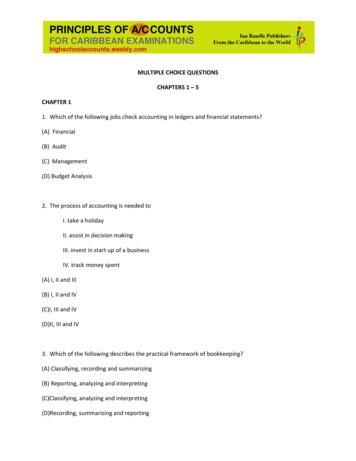
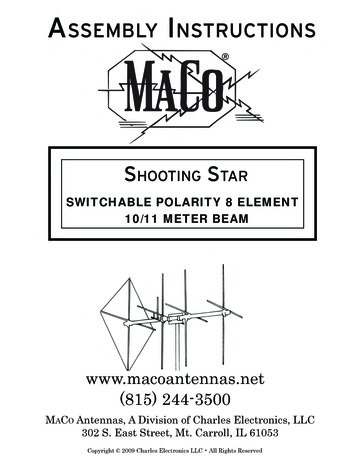
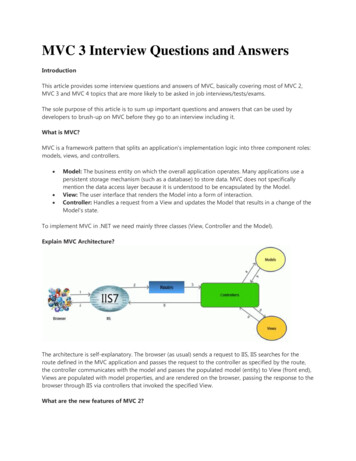
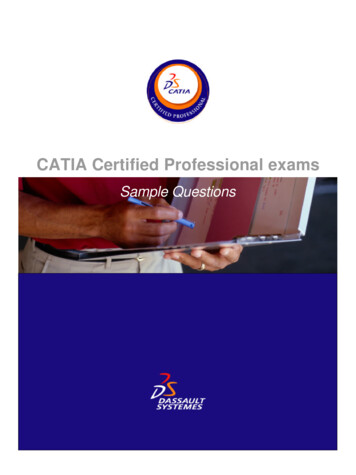
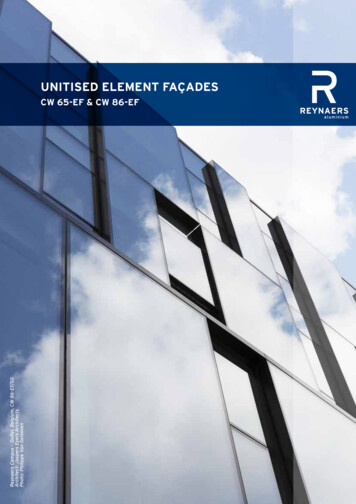

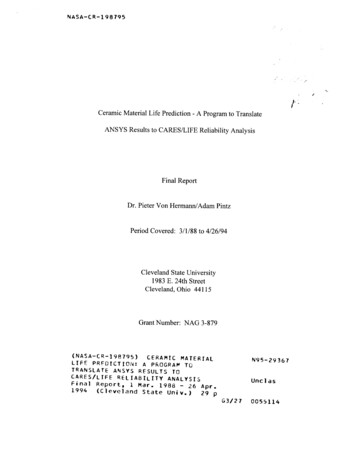
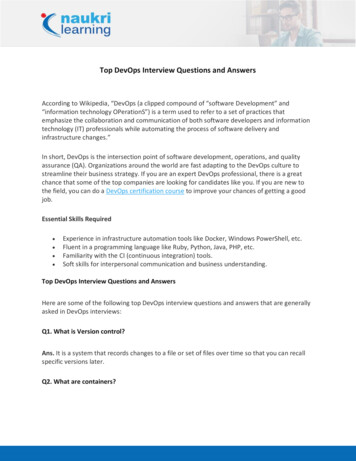
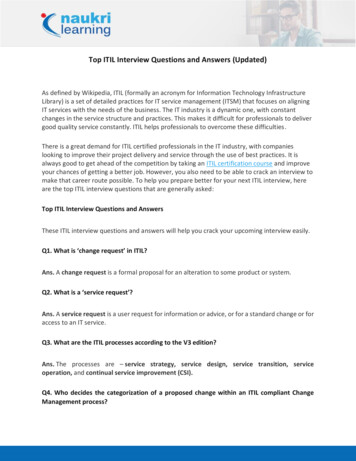
![Informatica Interview Questions and Answers [Scenario-Based]](/img/2/informatica-interview-questions-and-answers-scenario-based-1.jpg)
